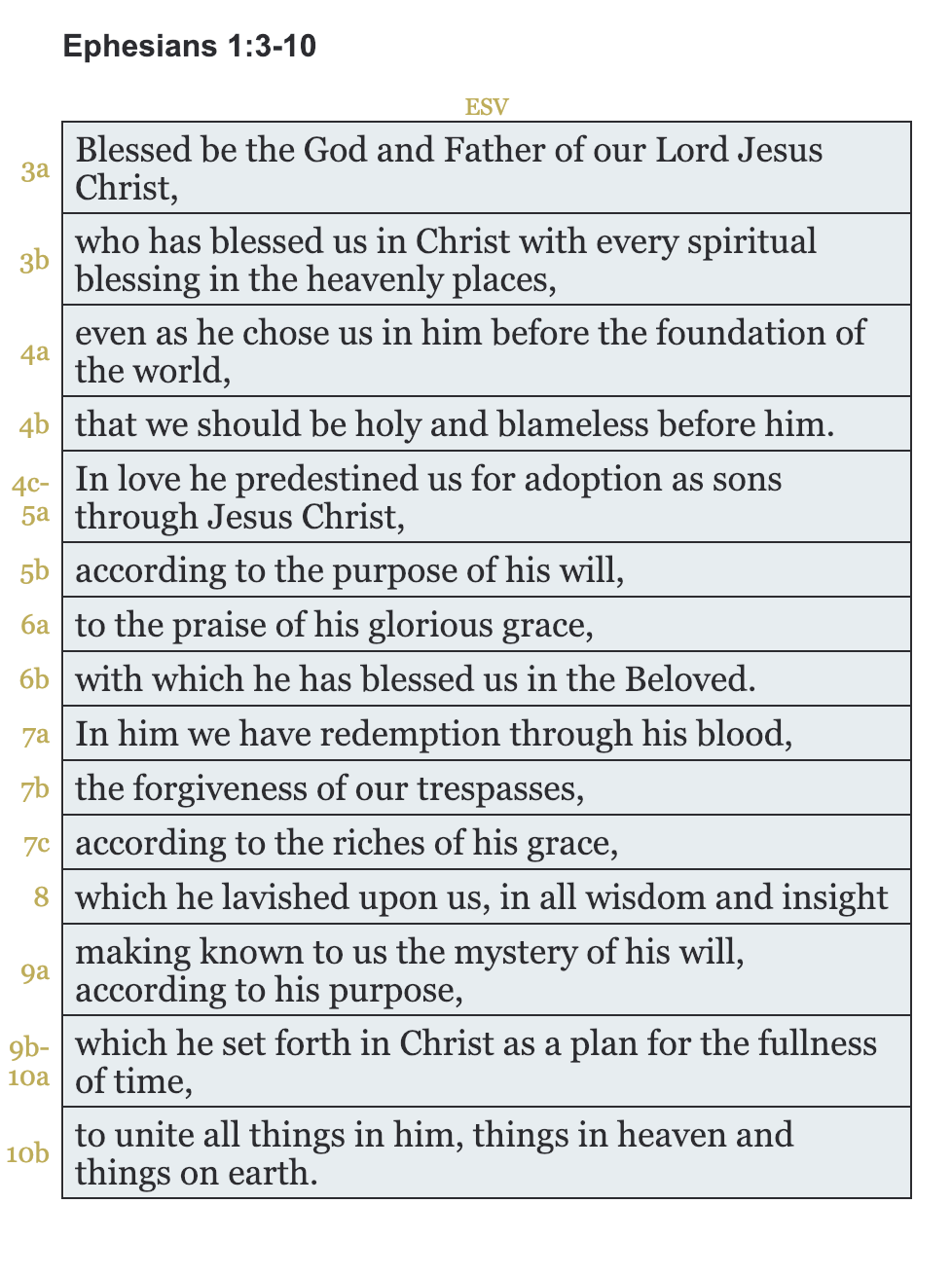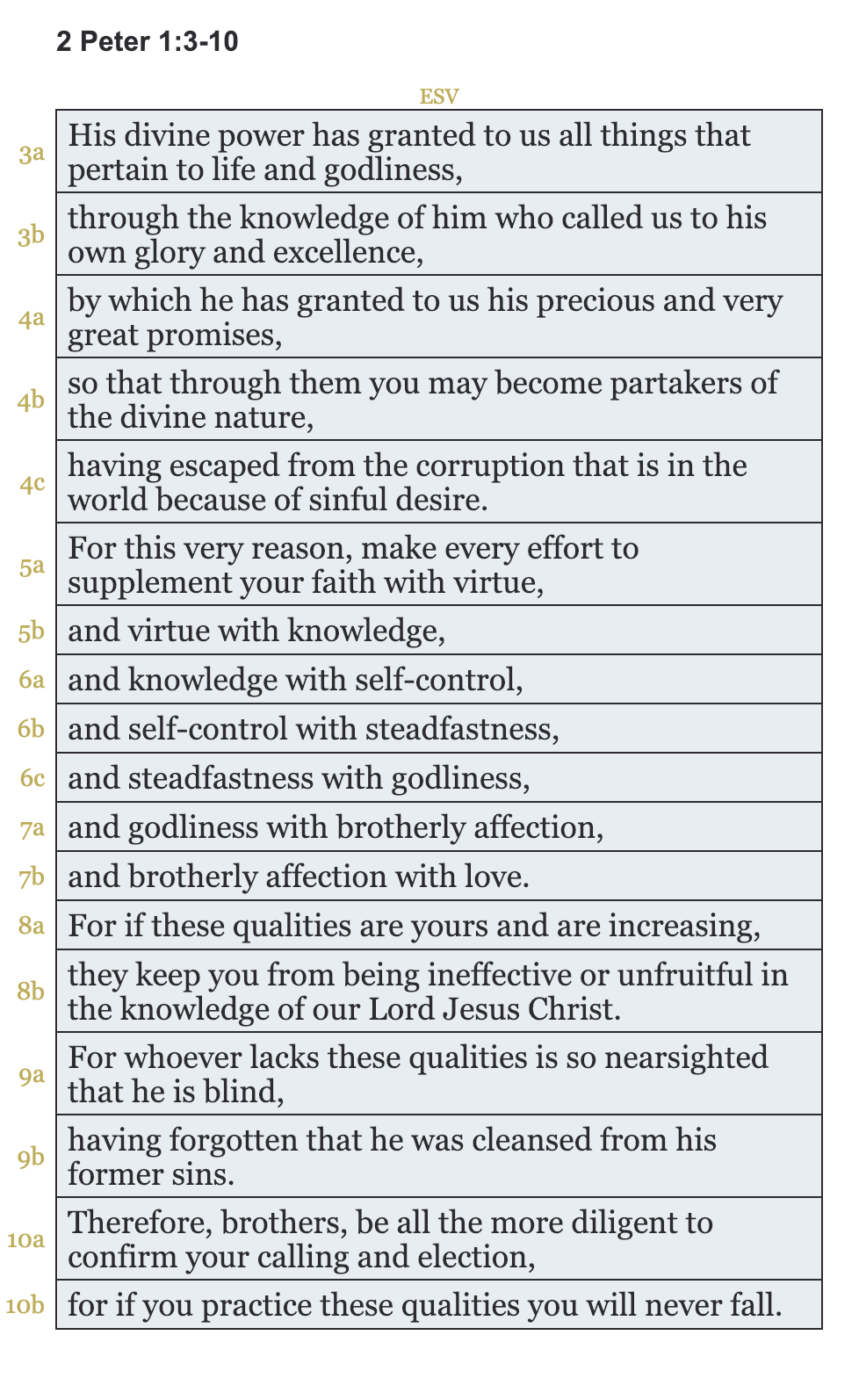Lesson 4 | Links in a chain: connecting the parts
How we communicate: units of thought
Ideas are conveyed in writing through units of thought, increasing in size from words to phrases, clauses, sentences, paragraphs, chapters and books. You have already taken a whole book (1 Thessalonians) and broken it down into its largest thematic units (chapters) as well as the subunits (paragraphs) that develop those themes. Our task in this lesson will be to drill down one or two levels further in order to see the links that connect ideas within paragraphs. (The next lesson will focus on discerning from those links what is the main point of each paragraph and chapter.)
Using the Discourse module, we will take one paragraph at a time, breaking the text down into manageable units. For the most part, punctuation will be your guide. Look for periods, semicolons, dashes, and commas—though not every comma will mark a place to divide since commas often divide off individual words and simple phrases. The goal is to have one clear statement in each unit. Another simple way to place divisions is to read the text aloud and note where you naturally pause or take a breath. We intuitively break texts into single units of thought in this way.
As previously mentioned, the app will automatically divide the passage by verses. Do not feel constrained by these divisions. Most verses break at new units, but not all do. It is ok to eliminate a break when a unit crosses over two or more verses. Let’s look at a couple examples.

Comparing a few English translations helps to see some variation in the breaks. There are three sentences here in the ESV, four in the NASB, and five in the NET and the NIV. These variations reflect the fact that, in Greek, this entire passage through v.14 is all one sentence!
All have a full stop at the end of v.4 although there is variation as to whether “in love” ends the sentence or begins a new one. The NASB and NIV add a full stop in the middle of v.8, while the NET adds the period at the end of the verse. The ESV leaves a little more ambiguity as to whether “in all wisdom and insight” is most closely tied to the clause before or the clause following.
Thus, it is clear that this is not a simple passage to divide, as evidenced by the variation among English versions. This also suggests that there is not one right way to divide this passage.
A couple final notes. Notice that I have units that span across verse divisions at 4-5 and 9-10. There are also commas within 8, 9a, and 10b where I chose not to make a division, thinking that each pair of phrases makes up only a single unit of thought.

At 5a, the comma only marks off the connector phrase "For this very reason," so there is no reason to make a division here. Likewise at 10a, the commas mark off the address, "brothers," and so this should not be divided. v.5-7 contain a whole list of spiritual character qualities that can be split as I have, or left together as one whole unit of thought.